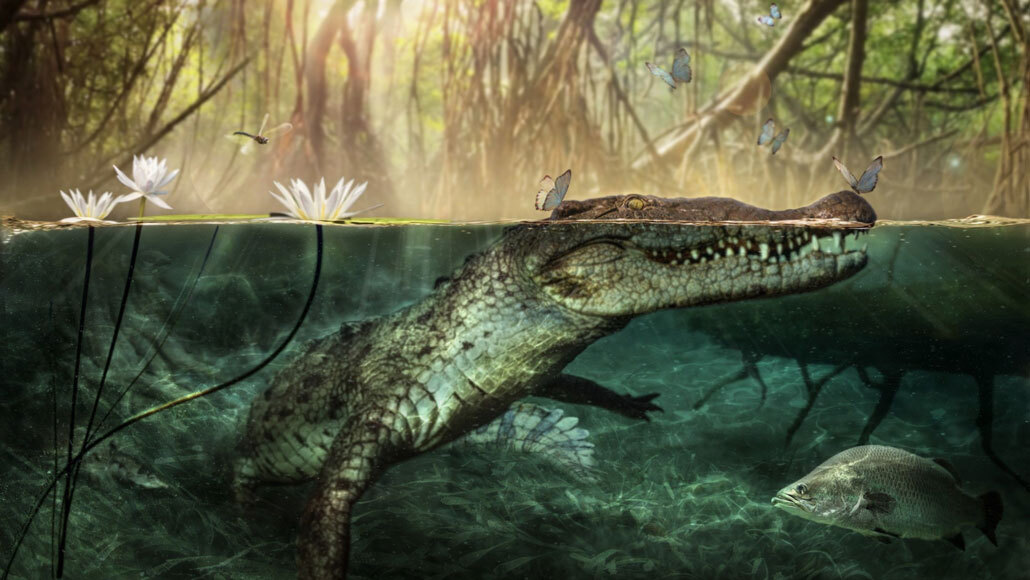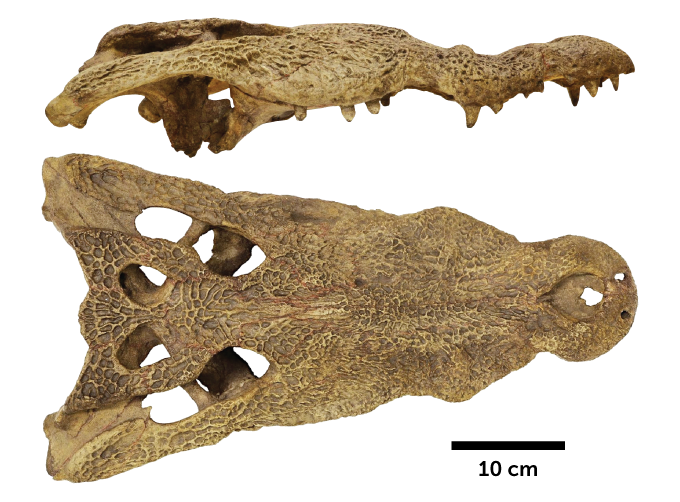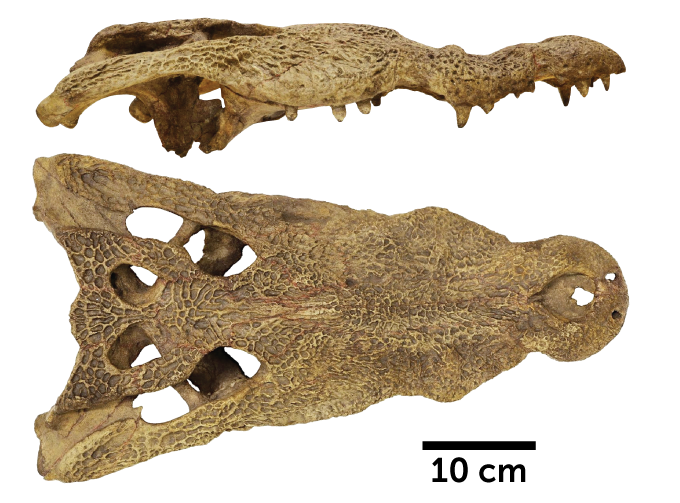An ancient skull hints crocodiles swam from Africa to the Americas
Features of a fossil from what’s now Libya tie the animal closely to its extant American kin

Like its American relatives, Crocodylus checchiai (illustrated) sported a bump on its snout.
Dawid A. Iurino









